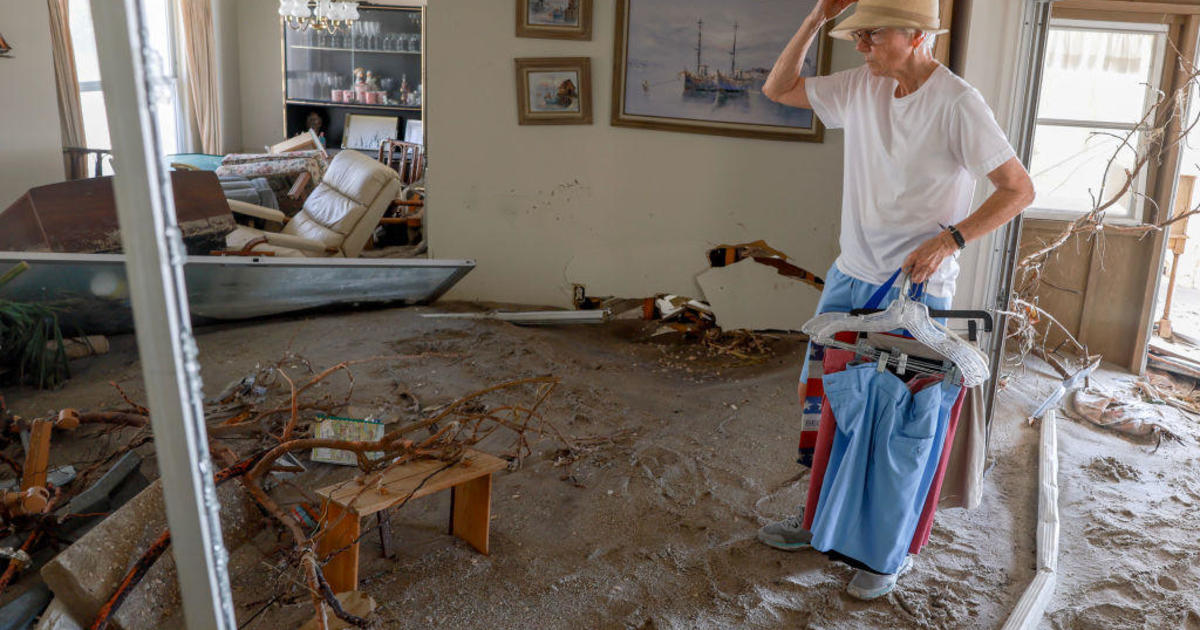The Small Business Administration (SBA) has temporarily suspended its Economic Injury Disaster Loan (EIDL) program due to a depletion of funds. This unexpected funding shortfall leaves thousands of individuals and businesses reeling from the devastation caused by Hurricanes Helene and Milton in urgent need of financial assistance. The timing is particularly problematic, as Congress, the body responsible for replenishing the SBA’s disaster relief fund, is currently in recess until November 12th. This delay significantly impacts those who have already applied for aid and those still awaiting application processing. The SBA, however, assures applicants that their applications are still being processed, and they will receive their loans as soon as additional funding is allocated. This situation highlights the crucial role of timely government funding in disaster response and the vulnerability of individuals and small businesses when such funding is insufficient. This article will delve deeper into the SBA’s current predicament, the challenges faced by disaster survivors, and the potential ramifications of the funding lapse.
The SBA’s EIDL Program and its Funding Crisis
The SBA’s EIDL program plays a vital role in providing much-needed financial support to individuals and businesses recovering from natural disasters. These low-interest, long-term loans offer crucial relief to those whose livelihoods have been devastated by events like Hurricanes Helene and Milton. The program’s recent suspension due to a lack of funds underscores the limitations inherent in relying solely on pre-allocated budget lines during unforeseen circumstances.
The Impact of Funding Depletion
The immediate consequence of the SBA’s depleted funds is a halt to new loan offers. This creates a significant bottleneck for individuals and businesses already struggling to rebuild their lives and businesses after enduring catastrophic weather events. The thousands of applications already submitted are now left in limbo, prolonging an already stressful waiting period. Many of these applicants face mounting debts, immediate repair needs, and lost income. The lack of prompt assistance from the SBA could have profound and long-lasting economic consequences.
Congressional Responsibility and the Path Forward
The responsibility for addressing this funding crisis falls squarely on Congress. The failure to include supplementary funds in the recent short-term spending bill reflects a systemic issue of inadequate planning and a potential lack of foresight concerning the demands placed on the SBA’s disaster relief programs. The delay until November 12th for Congressional action further exacerbates the crisis and underscores the critical need for improved coordination and quicker responses during such critical situations. The potential for further legislative delays poses a real threat to long-term recovery efforts.
The Plight of Disaster Survivors Awaiting Assistance
The suspension of the EIDL program throws disaster survivors already struggling with recovery into further hardship. Individuals facing the loss of homes, businesses, or employment desperately need financial aid to address immediate and urgent needs such as temporary housing, repairs, and replacing essential belongings. The waiting period intensifies the stress of uncertain futures, and threatens the long term viability of both businesses and livelihoods.
Navigating the Application Process and Uncertainty
Even before the funding lapse, the EIDL application process could be complex and time-consuming. Now, with the added uncertainty about funding, many affected individuals face anxiety about when – or even if – their loan applications will ever be processed. This anxiety not only compounds existing stresses but further delays recovery efforts and prevents immediate access to the critical financial assistance that the individuals and business need.
Long-Term Economic Implications
The lack of timely financial assistance caused by the depletion of EIDL funds poses a real threat to long-term economic recovery. The failure to support affected businesses means a longer-term struggle to rebuild and regain employment. This can increase unemployment rates, which creates further instability in affected communities and hampers a speedier return to economic health. This situation is exacerbated when considering that many disaster survivors are likely operating on limited resources, to begin with, leaving them particularly vulnerable and with less of a safety net.
The Role of the SBA and Future Preparedness
The SBA’s continued commitment to processing existing applications shows the agency’s dedication to assisting disaster survivors. However, the current situation reveals shortcomings in its long-term preparedness and capacity to manage large-scale emergency relief efforts. To avoid similar crises in the future, it is crucial to analyze the systemic issues that led to this funding shortage.
Improving Resource Allocation and Planning
Better planning and a more robust resource allocation strategy are needed. An adequate reserve fund specifically designed for such situations, replenished at the start of each fiscal year, should be considered. Additionally, a more streamlined process for evaluating disaster requests and delivering aid, would drastically cut recovery times for those seeking aid.
Strengthening Congressional Oversight
Congressional oversight of disaster relief funds requires scrutiny. This requires enhanced collaboration between executive agencies and the legislative branches, making a swift reaction to funding requests critical. Moreover, prompt funding allocations, not just immediate processing of applications, should also be a priority to avoid similar future delays in providing urgently needed assistance.
Takeaway Points:
- The SBA’s EIDL program is crucial for disaster recovery but faces significant funding challenges.
- The suspension of new loan offers due to funding depletion leaves disaster survivors in dire straits.
- Congressional action to replenish funds is urgently needed to support recovery efforts.
- Improvements in resource allocation, planning, and inter-agency cooperation are vital to avoid similar future crises.
- The situation highlights the systemic vulnerabilities of disaster relief funding mechanisms.




